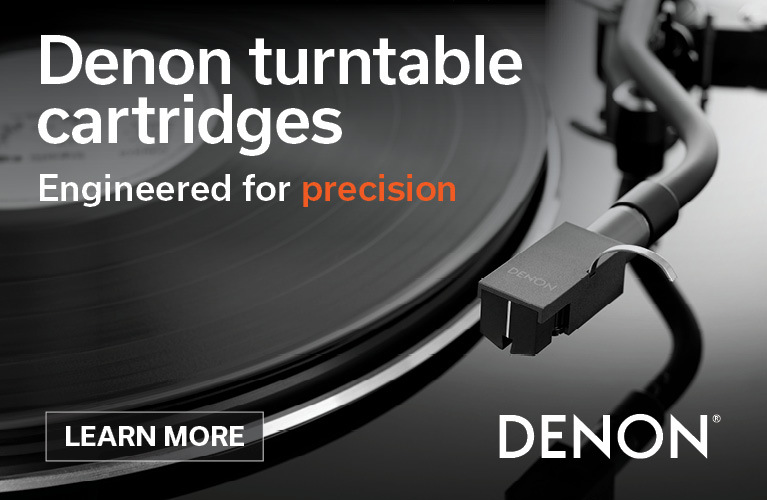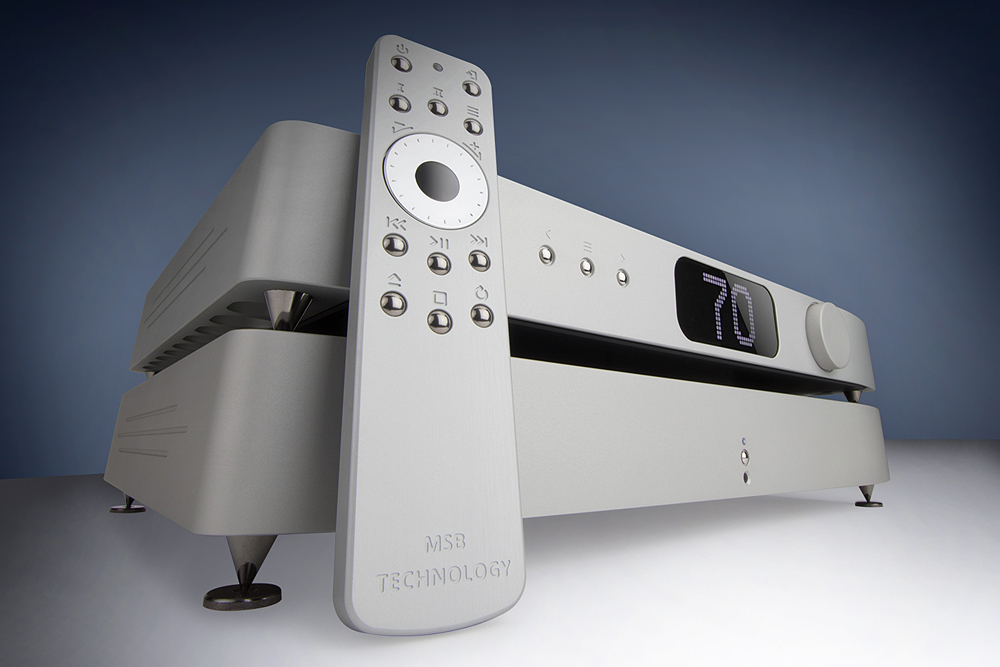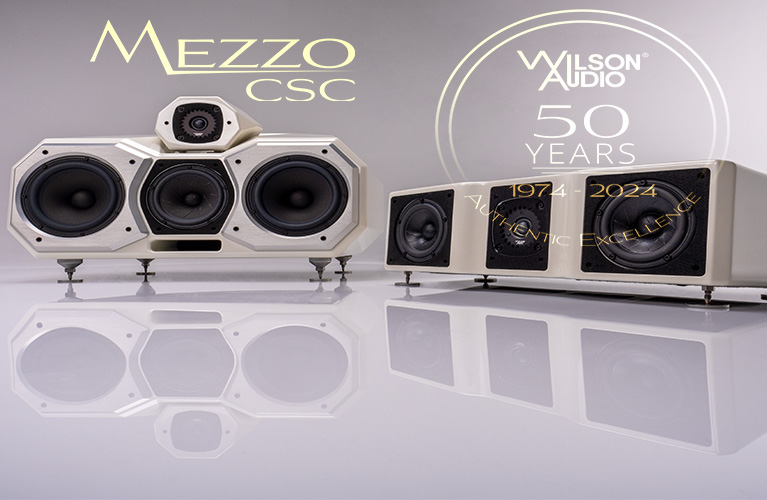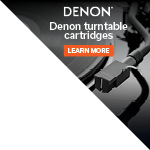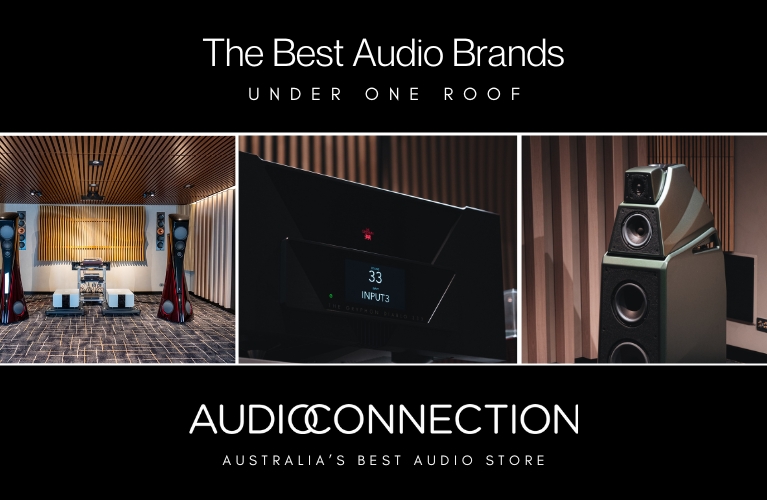Once much maligned, digital audio is now the most likely to be at the vanguard of advancing the state of the art in high-end audio. In this endeavour, there can be few companies with as distinguished and successful a pedigree as MSB Technology. Since its DIY beginnings in the 1980s and still family owned the company has continued to grow, stunning the competition with stratospherically priced fare like the Reference and Select line of Digital-to-Analogue Converters. Hearing the flagship Select in unfamiliar territory at recent audio shows and demonstrations, it took me no time at all to appreciate that I was in the presence of sonic greatness. For most of us, however, no matter how incredible the sound quality of these exalted devices, they remain the realm of aspirational fantasy. When MSB recently introduced the more affordable Discrete DAC and its bigger brother (sister?), the Premier DAC, I jumped at the chance to experience in my own system MSB’s trickle down technology in action.
Do you want to ride?
Affordable is a relative term, of course, and when it comes as fully optioned as did my review sample, the Premier DAC is certainly getting up there cost-wise. MSB DACs, like an increasing number of digital products these days, are based on a modular construction platform. It’s here that in many important respects MSB innovatively departs from the current modular pack. The base model Premier DAC ships ‘for starters’ with a choice of RCA or XLR analogue output modules (but not both), a standard Premier Clock module, and a digital input module which contains one coaxial (S/PDIF) and one TosLink optical input.
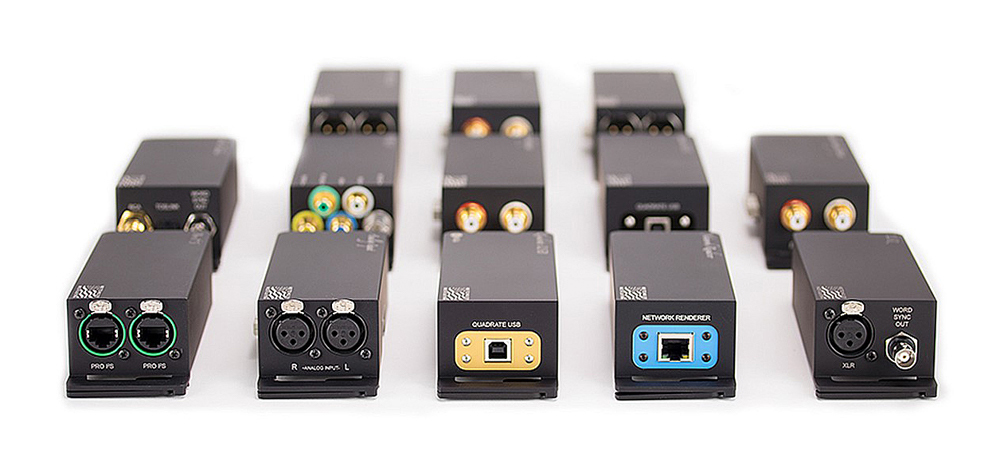
Then, you get the options each at a varying cost, allowing you to choose a maximum of three for the completely self-contained and isolated slots in the back of the unit. Choices, choices. More on these below. With its curvaceous enclosure, it certainly looks way cool and is distinctively and unmistakeably MSB. But more importantly, the sexy milled from solid aluminium casing is not only bomb proof, it is ingeniously and comprehensively future proof. Or “future ready”, as MSB’s CEO and designer, Jonathan Gullman, perhaps more appositely terms it.
I got a silver machine…
Weighing in at a substantial 8.2 kg and available in either matte silver or black, the Premier DAC’s satin smooth anodised casework too is integral to the electrical and mechanical design of the unit. Just about every aspect of an MSB product is now manufactured in-house at a brand new edge-of-the-art factory designed from the ground up to optimise reliable production. The ultra - rigid, CNC-machined enclosure allows for purpose built fine tailoring of the DAC’s functions, literally and simply, with the flick of a switch – actually a swing arm lever. The interchangeable modules insert and release as easily as installing and removing an XLR interconnect plug. There is no need for any tools or to gain access to the internals of the unit itself. It’s wonderfully tactile and addictive stuff.
... It flies
The ongoing flexibility that MSB’s completely modular approach affords the end user is crucial for optimising various interfaces and sources in this ever-changing digital age. To each according to his or her digital need, feed, and budget, at this point in time, the available options include: Pro I2S and Pro ISL modules representing proprietary MSB interfaces for use with MSB transports, Pro USB and MQA modules, a balanced AES/EBU input module and the brilliant Renderer V2 module for use with home Ethernet networks. The MSB Renderer V2 interface is MQA and Roon Ready and has a maximum sample rate (presently) of 32/768 kHz and 4xDSD. It makes the Premier DAC a network endpoint for software programs such as Roon and offers computer control of the DAC volume as well as enabling automatic firmware updates via the internet. The renderer package is entirely galvanically isolated from the DAC including isolated power.
Sideways through time
Another modular upgrade, and an essential one it seems given MSB’s overarching design priority of slaving each of the Premier DAC’s functions to the DAC master clock for the least jitter, is the Femto 93 Clock option. Even the ice cool white LED display is slaved to the audio clock. The Femto 93 Clock module which boasts thermally-stabilised custom crystals, came pre-fitted to my All Mod Cons review sample and is said to reduce audio jitter to as low as 93 femtoseconds. In absolute clock jitter terms, that’s lower than a digital snake’s armpit, resulting in MSB’s characteristically clean, clear, distortion-free sound. For those who maintain that all USB and Ethernet cables sound the same, kindly compare and contrast some samples through the Premier DAC. Quite audibly, the results are illuminating and revelatory.
It’s an electric line
According to MSB, the Premier DAC master clock is designed to be placed as close to the digital- to- analogue conversion point as possible. As stated above, the digital interface modules like the Pro ISL, Pro USB and Renderer V2 all then run directly off the master clock making the entire system a single clock domain operating with the lowest possible jitter.
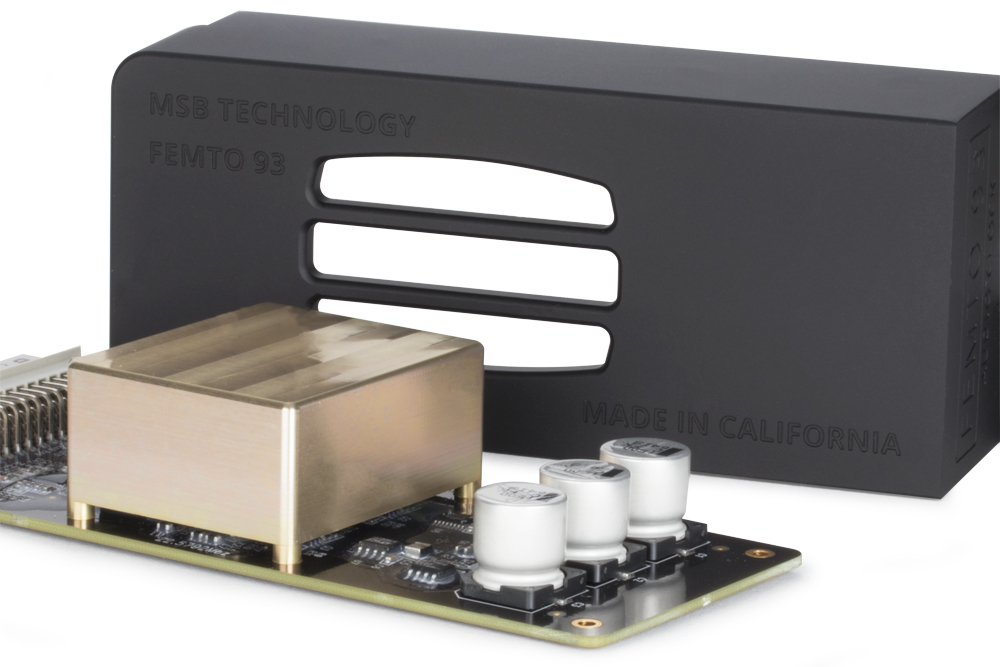
Take the Pro USB input for instance, whose sound in my room, system, and with my cables, I ultimately came to prefer and use the most. It offers up to 32-bit/768kHz processing with MQA decoding and up to 8xDSD. Says MSB, the Pro USB port is different from other computer interfaces in subtle but important ways. Not only is the data which is sent from the computer server, etc. synchronised with the DAC’s clock to minimise noise and jitter, the received data is error corrected and then checked for corruption by low noise single purpose decoding hardware before it is sent to be converted. And, instead of offering only partial isolation from the noise of the computer server like S/PDIF, copper Ethernet and other interfaces, the Pro USB uses single mode glass fibre cabling (up to 1 km lossless transmission!) to guarantee total, perfect electrical isolation.
It’s antiseptically clean
The Premier DAC comes standard with one outboard Discrete Power Supply (linear, not switch mode). For a relatively small additional outlay, you can add another independent Discrete PSU. For a relatively substantial extra outlay and a huge leap in performance – most notably an appreciable lowering of an already vanishingly-low noise floor and a manifest lift in dynamic clout and rhythmic acuity – you can add the MSB Powerbase which shares the same sleek casework as the Premier DAC unit itself. The Powerbase is the “A-Bomb (in Wardour Street)” upgrade. It contains multiple transformers for complete isolation of the DAC’s converter, clock and analogue circuits as well as a 12V trigger for remote control of power on and off. It automatically detects input voltage and switches to 120 Volt or 240 Volt operation. It boasts unique isolation technology and contains “over-voltage protection” and optimised power filtering.
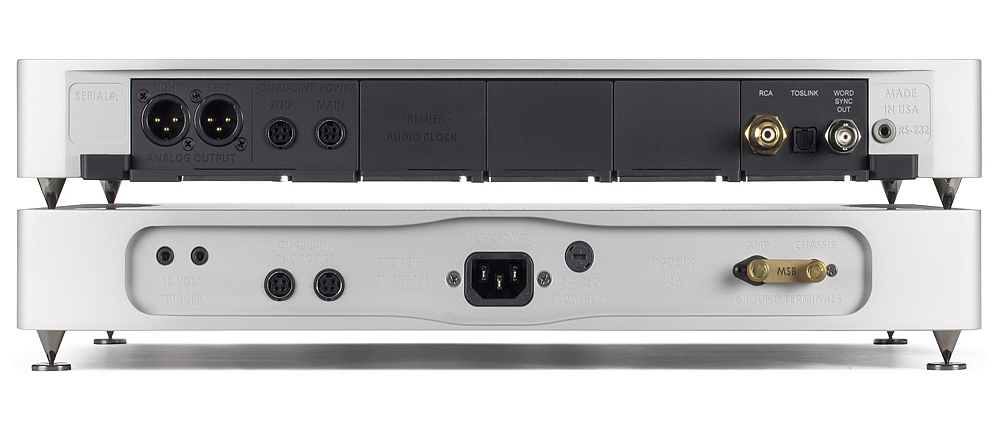
In its basic form, the Powerbase provides isolated power for the DAC circuits only. However, its operation can be boosted by providing enhanced grounding to an amplifier via a supplied cable. Once again, this constitutes neatly thought-out and rather useful added functionality from MSB Technology. Once experienced, there is no going back, so I contentedly used the Powerbase throughout the review period.
It flies
Whereas the entry level Discrete DAC uses two completely in-house designed and manufactured Prime DACs, the Premier DAC has four of these fully balanced, ultra-precision, discrete resistor ladder (multibit) DACs. The design enables playback of PCM and native DSD. Supported formats include 44.1 kHz up to 372 kHz with PCM, up to 32-bits and up to 8xDSD depending upon the chosen interface.
Also built entirely in-house is a brilliantly-executed XLR or optimised RCA analogue output module which is fully shielded and provides a galvanically isolated, buffer-less output impedance of a low 150 ohms. MSB prefers to rout the converted signal directly to the analogue outputs, eschewing op-amps, transistors, or vacuum tubes. Indeed, the Premier DAC’s proprietary hybrid analogue/digital volume control is so effective and transparent in operation it will obviate the need for many to use a separate preamplifier. It also feels so slinky to touch, I couldn’t imagine why you would need to use the remote.
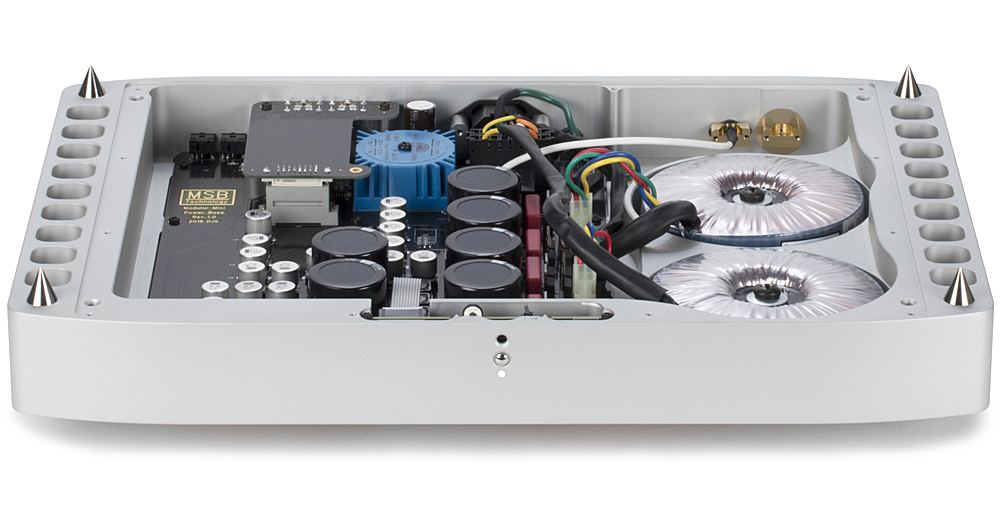
In sum, as well as the Powerbase boost, my Premier DAC review sample came loaded with the Quad rate DSD and MQA Pro USB/Pro ISL, Renderer Mk.2 and Femto 93 Clock upgrade modules. If you can be bothered using it, you also get a MSB Remote replete with hieroglyphics whose meaning will became apparent in use and which metal handset resembles a weightier and more solid OG Apple mp3 player.
If you’d like to stack the units, MSB supply screw-in footers and black plastic square inserts which fit into square recesses in the top of each chassis. I got better sound doing the same thing but using instead my tried and true 3D(2) visco-elastic dampers from Les Davis Audio. Stacking that entire contraption in turn atop footers from Arya Audio Labs delivered the complete sonic TKO in terms of ultimate detail retrieval, bloom, focus, and flow.
I got further insights on the Premier and MSB Technology’s overall design and engineering philosophies from CEO and Designer Jonathan Gullman:
We’re a company of engineers pursuing the ultimate goal of audio recreation. It’s our desire to make the music sound lifelike – as though the artist were standing in front of you. We want it to sound like you’re hearing it live. We’re a unique company because we design our products in-house. Over the last 20 years, we’ve developed our own custom DAC modules, input formats, and ultra-high performance clocks. In addition, we’ve created some high performance amplifiers.
Not only do we design everything ourselves, we also manufacture everything in-house. We have our own metal machine shop with 5 CNC mills, a fully automated circuit board assembly line, and hand assembly under the same roof as the R&D. A new factory tour video will be shown in the coming months.
I asked Gullman what differentiates the Premier DAC from its higher-wrung Reference.
The Premier DAC is a scaled down version of the Reference DAC. It has lots of trickle-down technology initially developed for the Select DAC. Like all MSB DACs, what makes the Premier DAC special is our custom architecture, built in-house DAC modules and our modular design. The modular design’s key feature is that it supports new formats and configurations – even interfaces coming in the future. The input modules are a standardized format across all our DACs; as new formats and technologies are developed, the DAC can be upgraded to support them with a simple input module change. Even the audio clock is a user-replaceable module. Once we develop the next iteration, it’ll be easy to upgrade to the newest version.
MSB has been designing and manufacturing discrete ladder DACs since 1999. Since then, we’ve discovered and implemented many unique and innovative improvements over the years. It’s best to think of our DAC modules as a black box. The modules take the raw digital data in and output a continuous voltage. They’re not limited by audio formats, sample rates, or even speed. We can operate our current DAC modules at up to 6 MHz for PCM and up to 50 MHz for DSD. This gives us ample headroom for future sample rates and audio formats. The other unique feature about our Hybrid and Prime DAC modules is they’re fully balanced. In today’s noisy environment, having the audio signal stay balanced to the point of conversion is key for maintaining the highest amount of noise rejection and resolution. Each one of our DAC modules processes both the positive and negative phases in perfect synchronicity.
The output stage of any DAC can have a large influence on its sound quality. The output stage has to translate the signals generated by the D/A circuit into signals compatible with connected amplifiers. Ideally, this process occurs without much signal loss, coloration, contamination or degradation. Most D/A circuits have feeble outputs, which must be amplified or buffered in order to successfully navigate the outside world. This amplification or buffering usually results in at least some degradation of sound quality as the signal is recreated by the active circuitry. This is the reason why there are thousands of driver circuits to choose from; each one has a different weakness. What’s unique about our D/A modules is we create a robust high-power signal that doesn’t need any further amplification or buffering to drive any external load. In all of our DACs, there isn’t active circuitry from the conversion point to the connector on the back. No op-amps, no transistors, no tubes.
The Premier Output stage has two output levels to choose from: high and low. These settings help match the DAC with the amplifier or preamplifier. If our DAC is used directly with an amplifier, an included proprietary ultra-low loss digital volume algorithm is used. Since digital volume control has some loss at lower volume settings, it’s best to match the gain in the system to keep the ideal listening level at a relatively high volume setting. If an external preamp is used, the digital volume control can be completely disabled and bypassed.
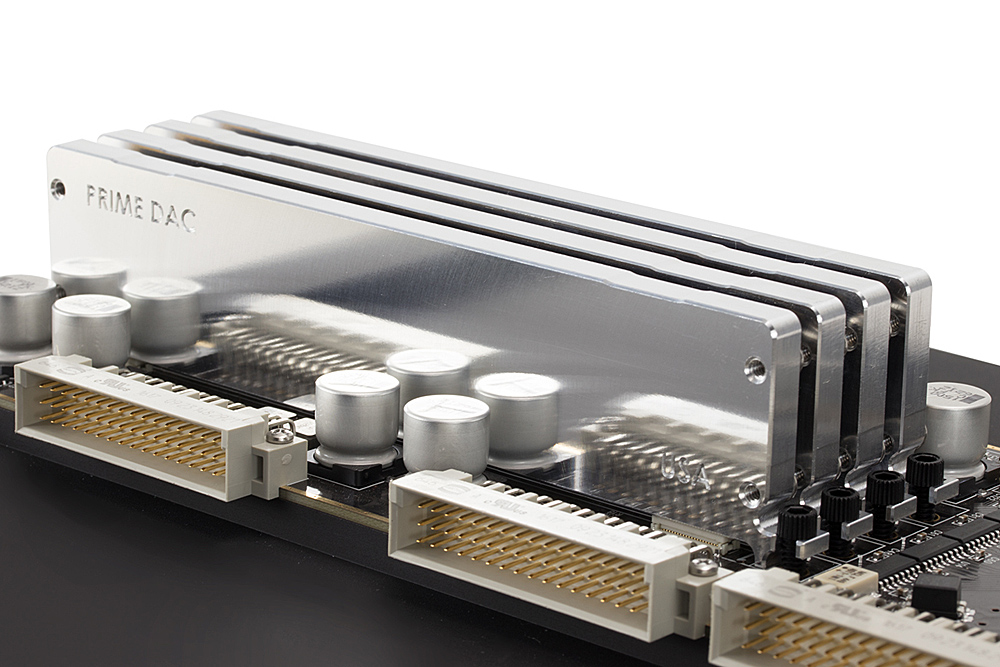
Would you like to comment on the future of the audio industry as the world works through COVID-19?
This situation certainly motivates us to pause and evaluate every aspect of our business. But for every challenge, there’s a solution. No audio shows? Maybe we need to work on more online video to compensate. Will our team have to spend more time working remotely? Then we’ll improve our online systems, communication, and software networking. Are we short-handed for daily operations? Then we’ll improve documentation and company organization. Whatever the market looks like after this, we’ll do our best to encourage growth, both within our team and in the market we’re a part of.
Hardships sharpen us. While we’re both excited and apprehensive about the future, we’ll come out of this stronger than before. We would encourage everyone to take advantage of this time to learn, study, plan, and make the best of our current moment. Our hearts go out to all affected. We hope everyone is doing their part to fight and reduce the impact of this virus in our communities locally and abroad. And remember, wash your hands!
Out of a dream
Does it sound good? Does it what. Onto the Aqua Acoustic La Diva CD transport (coupled by a Sablon Audio Panatela Reserva Coax) goes a bog-standard, remastered copy of Charles Mingus’ The Black Saint and the Sinner Lady and I continue to marvel at how good native, ‘mere’ 44.1 Red Book can sound these days through the right equipment. This often challenging and confrontational recording could well serve as a veritable soundtrack to these troubled times. Through the Premier DAC it sounded divine, closely approaching the best quality analogue playback. Conceived as a ballet, the recording is intentionally symphonic in its scale and dramatic sweep. The Premier DAC charted the music’s grander macrodynamic gestures with bounce and aplomb. It soars and dives and dances and swoops to the music with convincing weight and dynamic authority. The sound is exceptionally clear and detailed. The overall tonal balance is slightly warm but not at all dark. Soundstage perspectives are, where the recording allows, as this one does, huge, with breathtaking far depth perspectives, in particular.
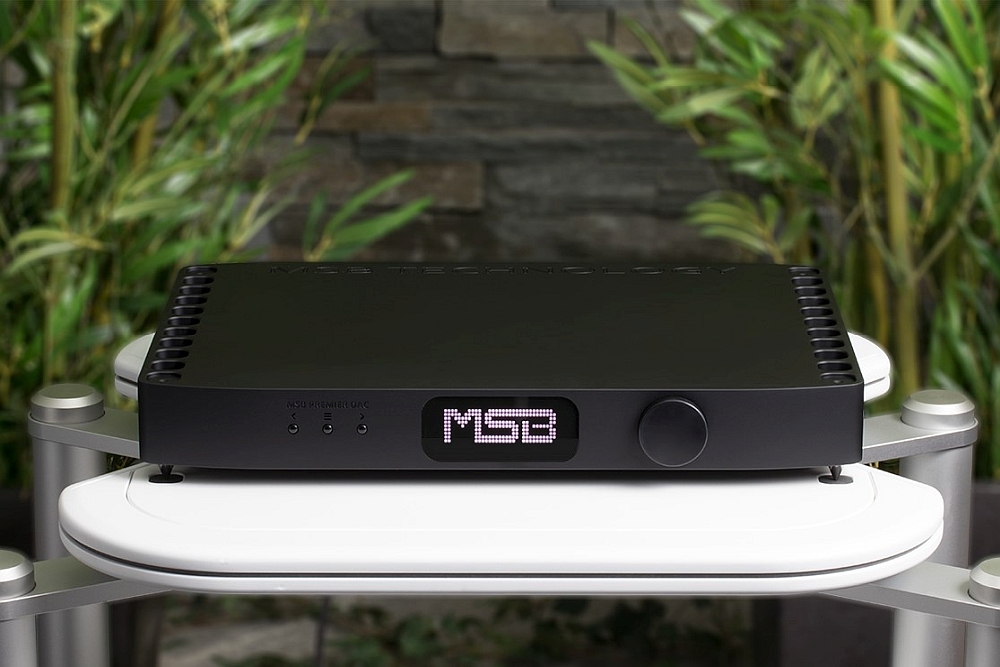
Featuring an 11- piece group, recorded live but with some overdubs, The Black Saint is a great test of a component’s ability to reproduce instrumental textures and tonal colours throughout the frequency spectrum, as well as to resolve instrumental attack, sustain and harmonic development. Here, the Premier DAC passed with flying colours. Images are pinpoint with great focus and noticeable front to back layering and dimensionality. The sound is smooth and supremely natural. Treble extension has excellent reach and there is a creditable absence of electronic edge, grain and etch. Instrumental separation is extraordinary. So too is tonal differentiation. Through the Premier DAC, tonal colours are rendered with the full range of kaleidoscopic Ellingtonian complexity. When foregrounded, Jackie Byard’s bluesy, sometimes purposely dissonant piano owns the performance in key places of the performance and has superb timbrel presence and jump(-in jive). The piano is correctly proportioned in size and always stable in location. At all times, the Premier DAC maintains structural coherence and organisation of often complex and congested musical strands, no matter how busy and chaotic the music becomes, gliding through the many varied textures and modalities of the score with consummate ease.
The Premier DAC is equally adept – and soulful – when the music shifts from the frenetic to quiet ballad and solo passages. Its powers of micro-resolution are particularly fine leading to a heightened sense of listener involvement and believability. Even when the processor is limited to this now relatively antiquated bitrate, the presentation is just that extra bit more nuanced and informative.
Reverberant decays tail into that vanishingly low noise floor with great subtlety and delicacy. Complex polyrhythms and rapid changes in tempo are tracked with impressive agility. Harmonic exposition is conveyed with exceptional purity. The strum and thrum of the solo flamenco guitar which punctuates and unifies the various thematic passages is especially striking, sounding more real than previously experienced. “Stop! Look! and Listen, Sinner” to the modal counter-melodic interludes overdubbed by Charlie Mariano on alto sax. These phantom incursions just make more emotional sense somehow through the Premier DAC. So clearly delineated in space and time, so memorable and swinging in incendiary spirit, Mariano’s compelling interludes leave the listener in absolutely no doubt as to the analogue rightness of the whole performance.
See yourself going by
Things get really moving with higher sample rates. Try dancing to a different sample rate of 24/88.2kHz in the form of Terpsichore: Apotheose de la Danse baroque through Dr Givorshner’s insanely good Taiko Audio SGM Extreme server. Performed by a 22-piece baroque orchestra, the music is just high energy orchestral thrills and spills. Admittedly this is a carefully recorded, close-miked affair. Nonetheless, the sheer amount of musical detail on offer, particularly in an expansive midrange populated by vintage stringed instruments and baroque woodwinds, is just mind-blowing. There is an improved sense of organic flow. Harmonic structures are even more finely resolved and developed. Dimensionality is even more full-bodied and richly textured. Once again, the analysis is, patently, transparently, intense. This is first rate magnetic listener engagement. The better the source, the better becomes the Premier DAC.
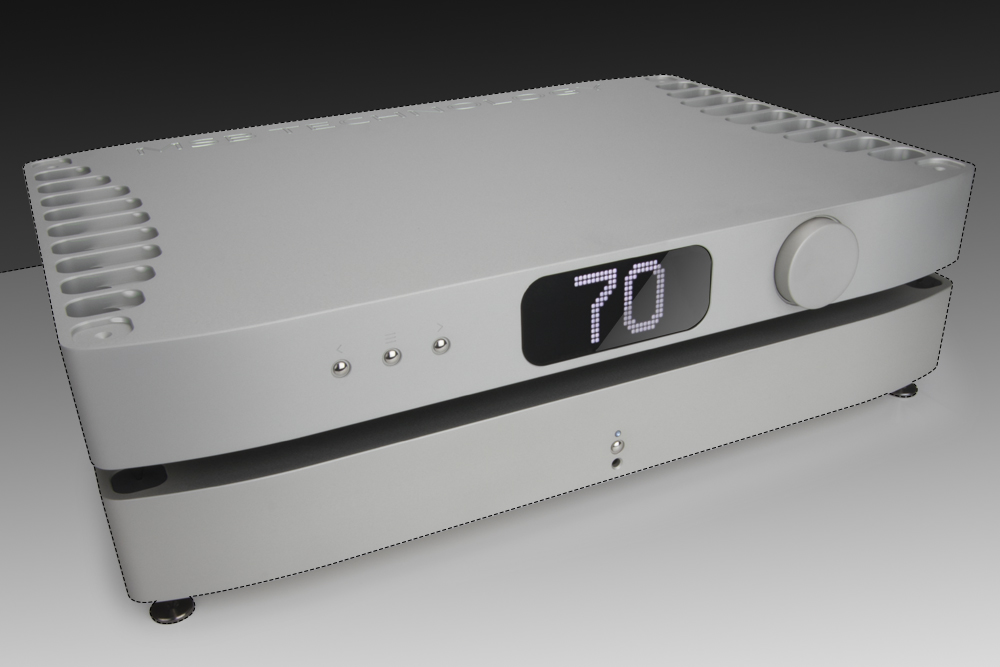
The other side of the sky
Just as the Premier DAC worked with a wide range of other equipment, it favoured no particular genre of music. Johnny Clarke’s “None Shall Escape the Judgement” is a roots rock reggae masterpiece. Recorded in the 1970’s by producer Bunny “Striker” Lee, it featured the legendary “flying cymbal” sound originated by The Aggrovators backing band drummer Carlton “Santa” Davis. Davis developed the sound, a distinctive and ear-catching open and closed high hat back-beat from a Philly soul “bump” beat. The Premier DAC nails it with an uncanny sense of precision. But also without any hardening, brightening, or sharpening of the sound like so much lesser digital (and scratchy, old vinyl 45s) tends to do.
It should be clear by now that the Premier DAC very successfully ticks all the right boxes across most sonic parameters I can think of. Listening to vital old reggae, its bass performance, while weighty and extended, lacks the propulsive bass drive of the tube based Aries Cerat Kassandra II Reference DAC. It also lacks the unparalleled rendering of pitch and note-to-note pitch relationships in the bass of my reference Aqua Acoustic Quality Formula xHD which, short of MSB’s own Select DAC, retains its mantle as the undisputed heavyweight champion of PRAT in the digital world. Both the Aries Cerat and the Aqua are arguably more lush than the strictly neutral Premier DAC. So as ever, you pays your money, you makes your choices. Assuming you can afford it, I can’t see how you could possibly go wrong if you ultimately preferred the MSB Premier DAC’s dependable and honestly musical take on things.
Conclusion – I’m in a silver machine
The MSB Premier DAC is a stand-alone Digital-to-Analogue Converter that uses some unique design innovations to ensure that digital reproduction is as good as it gets now and well into the future. When fully optioned, it is a somewhat costly proposition. But by the dint of its cleverly thought out modular and flexible approach, the user can upgrade as funds and new circumstances in digital audio allow. You will never feel short-changed in the numbers game of future formats and data transfer rates when you invest in MSB Technology.
The Premier DAC sound quality is first-rate, it is exceedingly well built and its industrial design endows it with wonderfully alluring good looks. One can only drool at what the more expensive Reference and Select DACs with their uprated DAC architecture bring to the party.
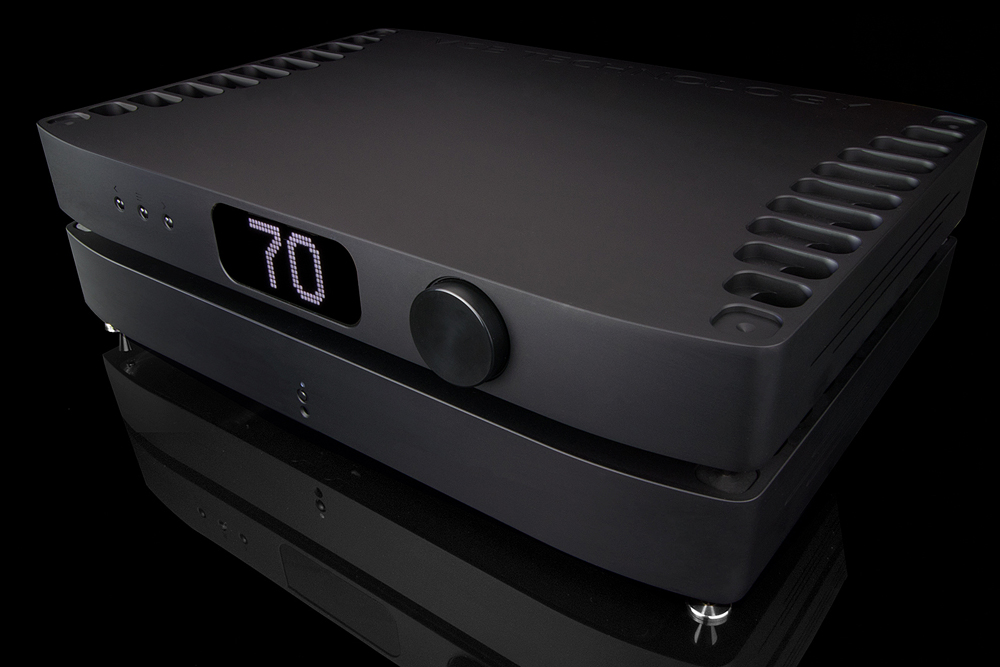
The Premier DAC’s sound is clear, detailed and enveloping. It is smooth and naturally revealing but never annoyingly soft, or what I call “faux analogue”. Within the confines of my system and room, it produced recording-specific soundscapes that had remarkably deep, deep-in-the-woods far depth perspectives which could deprive me of oxygen. Individual images too had a front to back layering and a physical dimensionality of a kind I have never before experienced in digital audio. Transparency was no less breathtaking and always in the service of the music. Adding the Powerbase, adds explosive dynamics and is well worth the additional outlay.
The MSB Premier DAC boasts a killer volume control and analogue output stage that is at least as good as many of the best preamps currently out there. In my experience, the right outboard preamp can imbue an improved sense of rhythm and timing. But perhaps that too is an artefact I personally crave. Noise and distortion are so low in the Premier DAC that MSB has had to design its own power amplifiers to complement its DACs. It really is axiomatic in high-end audio that less noise is more music and the MSB Premier DAC makes this look, and sound, easy.
Hawkwind’s classic “Silver Machine” was crafted to lampoon space travel when in fact it was written about a silver coloured racing bicycle. Check out the ride through the Premier DAC. It just might teleport you. I can’t recommend it highly enough.
… Peter Katsoolis
www.soundstageaustralia.com
Associated Equipment
- Speakers - Shun Mook Bella Voce
- Amplifier - VTL MB 185 Signature Series iii; Wavelength Audio Napoleon 300B; First Watt F7 and SIT-3; BAT VK655SE (partly through review)
- Preamplifier - Thrax Audio Dionysos; BAT VK-53SE (partly through review)
- Source - Aqua Acoustic Quality La Diva transport and xHD DAC; Metrum Acoustics Hex DAC; Auralic Aries Streamer; Taiko Audio SGM Extreme (on loan from reviewer Josh Givorshner)
- Cables - Shun Mook RCA; Acoustic Revive XLR-1.OPA II; Enklein Titan speaker cable; Nordost Heimdall 2; Sablon Audio RJ45 CAT; Skogrand Wagner AC and Luna Orange PC; Vermouth Audio Black Pearl loom; Luna Cables Rouge loom
- Equipment Support – SRA Scuttle Mk.2; Shun Mook; Mana Acoustics
- Accessories - Les Davis Audio 3D2 Viscoelastic discs and mat; Shun Mook Mpingo and maple and ebony boards; Arya Audio Labs Footers; Nordost QRT products and Sort Kones BC; Acoustic Revive RIQ-5010 and 5010W resonators; SPEC Corp. RSP-AZ1 Real Sound Processor; Ikea Aptilig maple butcher’s blocks
MSB Technology Premier Digital-to-Analogue Converter
Price: Base Model AU$31,500, as tested AU$56,500 (see text for upgrades)
Warranty: Three Years
Australian Distributor: Audio Fidelity
+61 3 9036 2751
www.audiofidelity.com.au
MSB Technology Corp
625 Main Street
Watsonville CA, 95076
United States of America
+1 716 688-3527
www.msbtechnology.com

